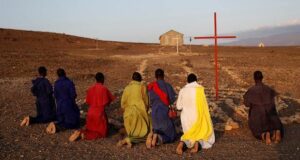The U.S. marriage rate has declined by nearly 60 percent in the past century, a new study by the National Center for Family & Marriage Research found.
Although national marriage rates fluctuated continuously between the 1890s and 1960s, with peaks and troughs in between, there has been a consistent decline since the 1970s. The marriage rate in 1970 stood at 76.5 percent, but today that has more than halved down to a paltry 31.1 percent.
Sociologist Andrew Cherlin of John Hopkins University noted that the findings reveal that the formal benefits of marriage are continuing to dwindle as the rise of cohabitation and co-parenting have eroded historic social pressures.
“It used to be a basic institution that everyone had to buy into in early adulthood,” he said, according to “National Review.” “You got married, then you moved in together and then you got a job. Marriage is now becoming the last step into adulthood.”
Academic studies about American social attitudes toward marriage have not changed considerably despite the rapidly changing wedding landscape. Although nearly three-quarters of seniors surveyed in 1976 expressed an interest in getting married, that number dropped by only 3 percent by 2020.
The new research paper also underscores divergent marriage rates by race and ethnicity. Although women as a whole have seen marriage rates decline since the 1950s, these changes have been particularly pronounced for blacks and Hispanics.
“This decline has been most dramatic for Hispanic and black women, who experienced 33 percent and 60 percent declines in the proportion of women married, respectively,” researchers said. “The racial/ethnic group with the lowest proportion married is black women (26 percent), and the group with the highest is Asian women (56 percent).”
Women getting married for the first time in their lives, a demographic group that falls between 40 and 59, have seen their numbers skyrocket in recent years. Since 1990, delayed marriages have increased by 75 percent. In the last century, the United States experienced two notable baby booms following World War I in the 1920s and World War II in the 1950s.
–Dwight Widaman | Metro Voice
 Metro Voice News Celebrating Faith, Family & Community
Metro Voice News Celebrating Faith, Family & Community 







